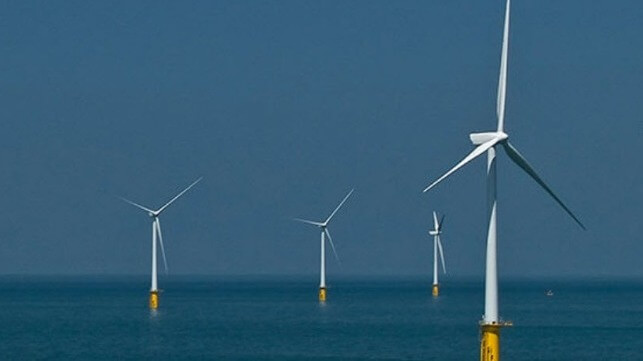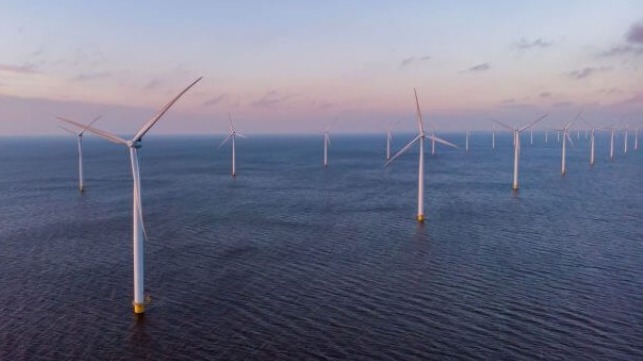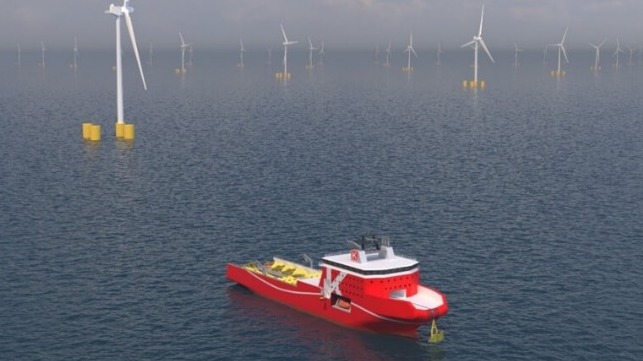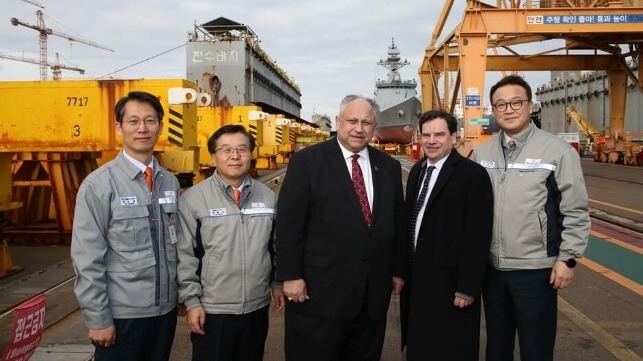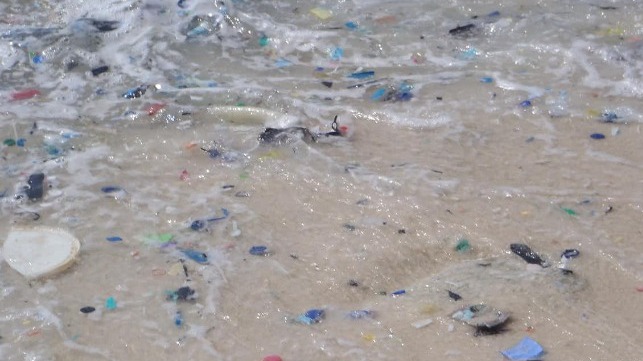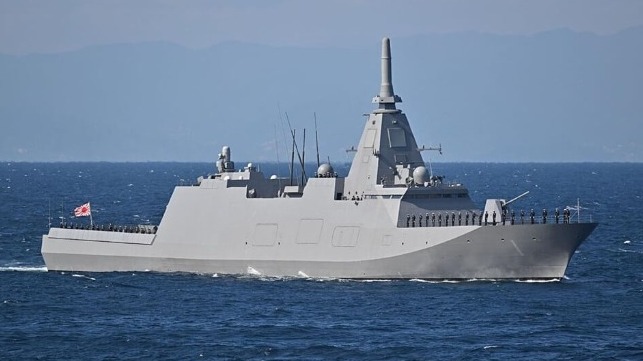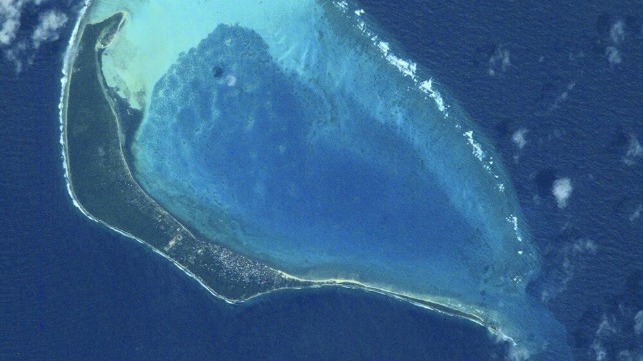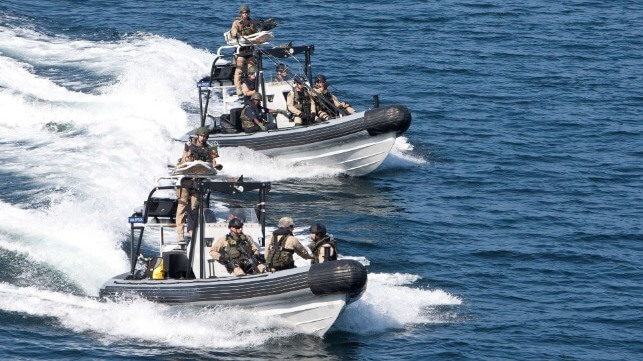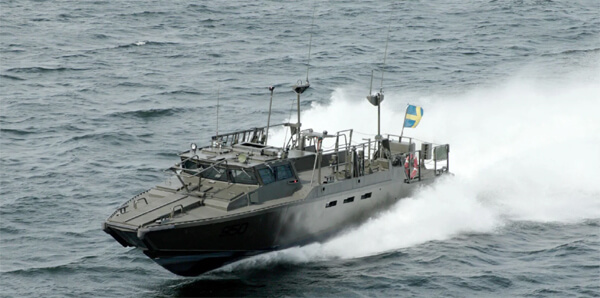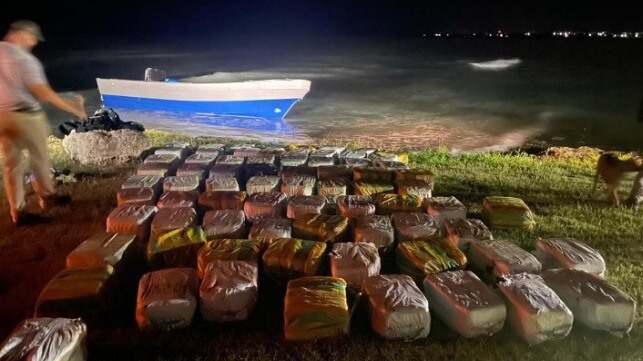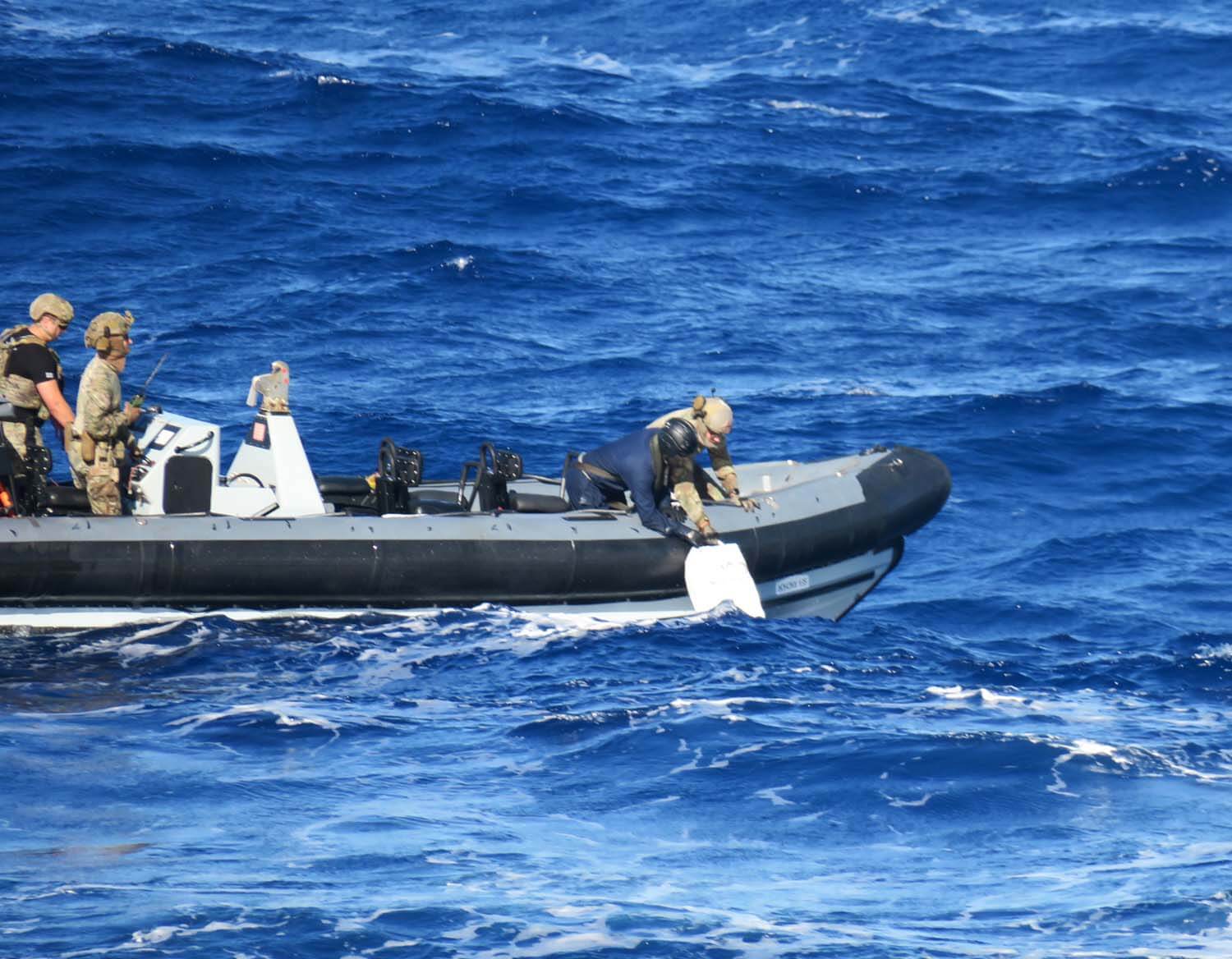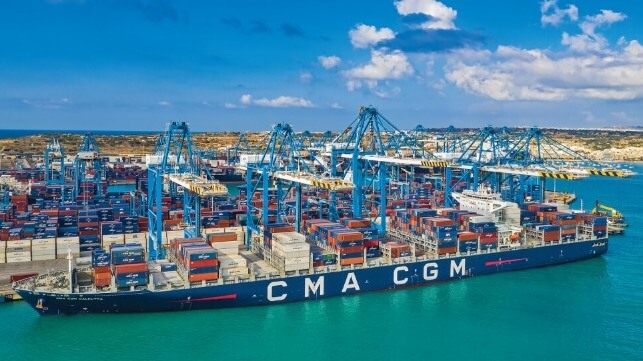Reuters | March 3, 2024 | 1:30 am Battery Metals Latin America Lithium
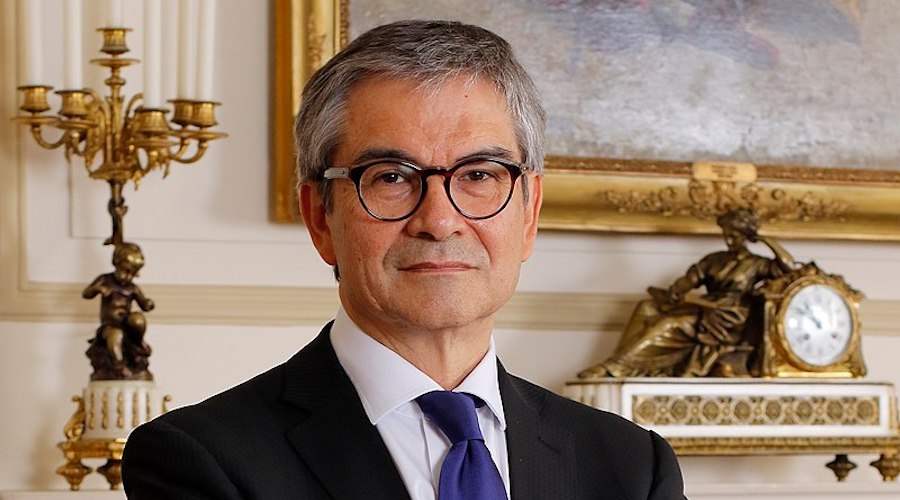
Mario Marcel Cullell, Chile’s Minister of Finance. (Image by Banco Central de Chile, Wikimedia Commons.)
Chile wants to have three or four new lithium projects operational by 2026, the country’s Minister of Finance Mario Marcel said on Saturday.

The South American country – the world’s largest copper producer and the second-largest producer of lithium – initiated a policy last year to increase state control of the strategic metal needed in batteries for electric vehicles.
Marcel spoke following a meeting with US Treasury Secretary Janet Yellen, who has been touring the country.
On Saturday, Yellen visited the US lithium producer Albemarle in northern Chile, saying expanded US-Chilean ties would benefit both countries, improve energy security and help achieve key climate goals.
There are currently only two producers of lithium in Chile – Albemarle and SQM – with investors still waiting for the left-wing government of President Gabriel Boric to define its national lithium strategy as it seeks public-private partnerships to develop its lithium salt flats.
Earlier this week, Chile’s mining minister said the government had hoped to finalize lithium exploration tenders in the first quarter of this year for private companies.
Chile’s state-owned copper mining company, Codelco, has been selected to represent the Chilean state in the new public-private model for lithium as Boric seeks to expand the long-stalled industry.
(By Andrea Shalal and Lucinda Elliott; Editing by Jonathan Oatis)
Yellen praises Chile’s policies in visit to lithium-rich ally
Bloomberg News | March 1, 2024
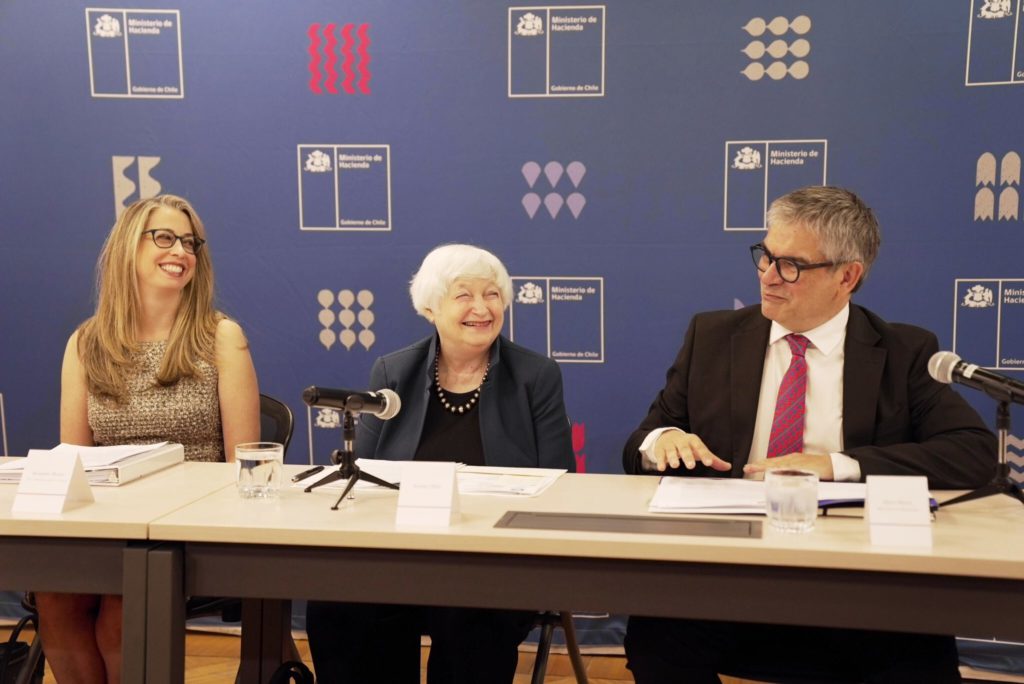
Janet Yellen meeting with Chile’s Finance Minister Mario Marcel. Credit: Janet Yellen via X
US Treasury Secretary Janet Yellen on Friday lavished praise on Chile during a visit aimed at strengthening ties with an ally whose critical minerals are key to weaning dependence off China.

The South American nation has an “impressive agenda” including issuing the region’s first sovereign green bonds, Yellen said after a meeting with Finance Minister Mario Marcel in Santiago. She will meet with President Gabriel Boric later in the day.
“As a leading producer of both copper and lithium, Chile has a critical role to play in the supply chains that will power our world’s transition to clean energy,” Yellen said. “American companies are investing. And we see opportunities to further integrate our supply chains with benefits for both our economies.”
On Saturday, Yellen plans to tour Albemarle Corp.’s lithium-processing facility at Antofagasta in the north of the country. Chile has the world’s largest reserves of lithium – a metal essential for making batteries that power electric vehicles — and is the No. 2 supplier after Australia.
That also makes it a vital partner for China, by far the top global EV producer, which last year bought about two-thirds of Chile’s total lithium exports. The Biden administration is backing domestic EV plants with massive subsidies, as it seeks to grab a bigger share of the industry — and also pushing to secure their supplies of key ingredients from countries other than China.
Such initiatives are becoming part of the mission for Yellen, who over the past year has effectively become her country’s chief economic diplomat. She’s championed the administration’s “friend-shoring” agenda, an effort to make US supply chains less dependent on China and less vulnerable to potential coercion. She traveled to India four times and also visited Indonesia, another resource-rich nation, and Vietnam.
Marcel told reporters that Chile’s national lithium policy seeks to ensure there’s no dominance of companies from any specific country.
Market turbulence
The EV boom has triggered a rollercoaster ride in the once-tiny market for lithium. Prices surged through late 2022, and by one measure they’ve slumped more than 80% since then. There’s been a slide in nickel and other key metals too, as a wave of new supply hits the market. For commodity producers like Chile, that’s making it difficult to invest in new mines.
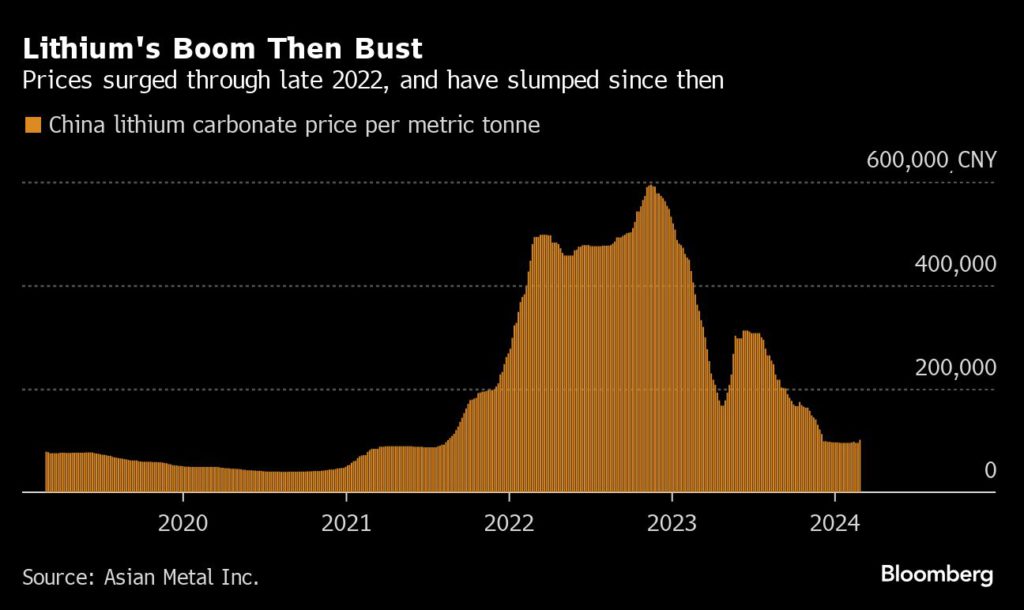
Chile’s President Gabriel Boric wants the state to take a controlling stake in operations considered strategically significant, with the twin goals of making lithium production more sustainable and generating more money.
Understanding how this reform would work in practice, and how it will affect US firms, is something Yellen will seek to do during the visit, a Treasury official said. The Chilean government is respecting existing contracts, which in the case of US-based Albemarle run until 2043.
Mining Minister Aurora Williams said this week that the government expects to lay out by end-March which new lithium areas will be made available under the new public-private partnership model. Contracts will then be finalized by end-June. Chile has been losing market share as output remains restricted to two operations on a single giant salt flat..
As a free-trade partner with the US for more than two decades, Chile stands to benefit from President Joe Biden’s green stimulus program, potentially increasing demand for its lithium. Trade between the countries has grown around 9% a year since 2003.
‘Strategic partner’
Yellen’s visit to Chile “reflects our character as a strategic partner,” Marcel said in a statement, citing “the flow of investments between both countries” as well as talks on issues like the environment and the digital economy.
The US has competition, though. All across the so-called lithium triangle of Argentina, Chile and Bolivia, which accounts for more than half of global resources, Chinese investors are making inroads – and helping the countries shift further down the electric-vehicle supply chain by leveraging their vast mineral wealth.
Chile and Argentina are keen to be part of American EV plans, but they also continue to woo Chinese investors who can bring funds for more value-added investments.
Still, expanding the range of buyers would likely be good for Chile, according to Yellen — especially in light of China’s recent economic woes, which have weighed on Chile’s exports.
“They’re probably interested in diversifying their purchasers,” she said. “Just as we’re interested in diversifying suppliers.”
(By Viktoria Dendrinou, Matthew Malinowski and James Attwood)
